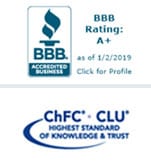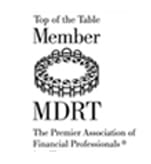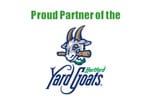
Company-sponsored 401(k) and 403(b) plans have two major selling points: contributions are pre-tax, and most plans come with a company match system that increases your investment with additional funds from your employer. Both are compelling, financially-savvy reasons to stay invested in your 401(k) while you’re working. After you retire, however, it’s a different story. You and your former employer can no longer contribute. While any major financial decision should be assessed in the context of your own unique situation, many retirees-to-be solve their 401(k) conundrum by rolling over into an IRA. Here are five reasons why a 401(k) rollover might be for you:
1. More high-quality investment options
Your company plan may offer a variety of mutual funds, but the logic of the market still holds true—what goes up can and will go down. Consider the market carnage of 2008, when the average 401(k) account lost 25% of its assets. Meanwhile, individuals who took cover in CD’s and other short-term investments saw little to no growth. With an IRA, you have more—and often better—investment options. That includes an optimally-balanced and diversified portfolio that can protect your assets from catastrophic loss if one part of the market starts to tank, and fixed index annuities, which guarantee your principal and offer competitive rates of return while generating an income you can’t outlive.
2. Greater access to your money
Remember when you first signed up for your 401(k) and HR handed you a document that looked like an unabridged copy of War and Peace? That was your plan document, approximately 50-300 pages of tiny type and legal jargon that dictate what you can do with your company plan. That includes withdrawals, loans, and distributions. With an IRA you aren’t restrained by your employer’s rulebook and can make distributions as you please, although the distribution may be taxable.
3. No 20% mandatory withholding with a direct rollover
There are two ways to conduct a 401(k) rollover. Either you can move the money directly into the new IRA account—a maneuver called a direct or trustee-to-trustee transfer—or you can have the money sent to you as a check which you then deposit into the IRA within 60 days to avoid taxes. Usually, it’s better to opt for a direct transfer. Why? If a check is written to the 401(k) owner, the IRS will withhold 20%. That’s why we recommend you conduct your rollover with the help of a financial advisor who can help you avoid expensive tax traps hidden in the fine print.
4. Optimized inheritance distributions
When the IRA Stretch Option was introduced in 2002, children and grandchildren of IRA owners were given the ability to spread inherited IRA distributions over their individual life expectancies. As a result, they are no longer forced into rapid distribution—and rapid taxation. Unfortunately, few 401(k) plan administrators allow non-spousal beneficiaries to exercise the Stretch Option, instead forcing them to take full taxable distribution in just five years. By rolling over into an IRA, you give your heirs a lifetime of investment options, income flexibility, and growth.
5. Take advantage of Roth conversions
While a growing number of employers are offering Roth 401(k)s, many are still unwilling to deal with the added administrative headaches these accounts entail. However, if you are a single filer with a yearly income below $137,000 or below $203,000 for a married couple filing jointly, you can take advantage of converting your traditional 401(k) directly to a Roth IRA. What are the benefits of a Roth conversion? After you pay the initial conversion tax, your new Roth IRA will grow tax-free. Plus, when you start taking distributions, they will also be tax-free. And what’s not to love about that?


Sara McKinney
saractag@gmail.com
Sara is a recent graduate of Kalamazoo College and a new addition to the Cowen Team. Her responsibilities include IT support, event planning, and general administrative assistance.




